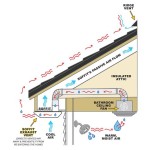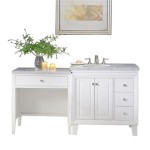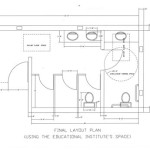Disabled Bathroom Sink: Accessibility Features and Considerations
In recent years, accessibility in public and private spaces has gained significant importance. As part of this movement, ensuring accessibility in restrooms, particularly for individuals with disabilities, has become a critical aspect of design and construction. One crucial element within accessible restrooms is the bathroom sink, which needs to be designed and installed with accessibility in mind. This article delves into the essential features and considerations for disabled bathroom sinks, highlighting how they contribute to a more inclusive and user-friendly bathroom environment.
Features of a Disabled Bathroom Sink
A disabled bathroom sink is designed to be accessible and comfortable for individuals with a wide range of disabilities. Several features distinguish these sinks from standard sinks, ensuring they meet the specific needs and requirements of users. Some of the key features include:
- Lower Mount: One of the most prominent features of a disabled bathroom sink is its lower mount. This allows the sink to be positioned at a height that is easily accessible to wheelchair users, minimizing the need for extensive reaching or bending. This feature enhances independence and provides a more comfortable experience for users.
- Knee Space: Adequate knee space beneath the sink is crucial to ensure that individuals with mobility impairments can comfortably access the sink without obstruction. This space allows for easy maneuvering of wheelchairs, ensuring a safe and accessible approach to the sink.
- Clearance for Approach: The sink area should have sufficient clearance for wheelchair users to approach the sink without obstruction. This means ensuring enough space for the wheelchair to turn around and maneuver smoothly, preventing any potential collisions or limitations in access.
Considerations for Choosing a Disabled Bathroom Sink
Selecting the right disabled bathroom sink involves considering several factors to ensure optimal functionality and user comfort. The following considerations play a significant role in making an informed decision:
- Space Constraints: The available space within the bathroom is a crucial factor when choosing a disabled bathroom sink. Narrow spaces may limit the selection of sinks, requiring careful consideration of the dimensions and overall size. Assessing the available space accurately ensures the chosen sink fits well within the designated area without compromising accessibility.
- User Needs: Understanding the specific needs of the intended users is vital in selecting the most suitable disabled bathroom sink. This may include considering the specific mobility challenges, physical limitations, and height requirements of the users to choose a sink that caters to their individual needs effectively.
- Material: The material chosen for the disabled bathroom sink plays a crucial role in its durability and resistance to damage. Stainless steel is a popular choice due to its strength, resistance to corrosion, and easy maintenance. Other durable options include ceramic and acrylic, each showcasing unique characteristics in terms of aesthetic appeal, maintenance, and cost.
Benefits of Using a Disabled Bathroom Sink
Integrating disabled bathroom sinks into restrooms offers several benefits for individuals with disabilities and the overall environment. These benefits contribute to a more inclusive and accessible experience for all users:
- Enhanced Independence: Disabled bathroom sinks empower individuals with disabilities by providing them with the means to perform everyday tasks, such as washing their hands, independently. This sense of autonomy is crucial for enhancing self-esteem and promoting a positive self-image.
- Increased Functionality: The design features of a disabled bathroom sink, such as the lower mount and knee space, improve the overall functionality of the sink. This ensures users with mobility challenges can comfortably reach the sink and utilize it without experiencing difficulty or discomfort.
- Improved Safety: The accessibility features of a disabled bathroom sink contribute to a safer environment. By facilitating easier access and eliminating obstructions, these features reduce the risk of accidents and falls, especially for individuals with limited mobility.
In conclusion, disabled bathroom sinks are an essential component of accessible restroom design. They are specifically designed to accommodate the needs of individuals with disabilities, promoting inclusivity, independence, and a safer environment. By understanding the features, considerations, and benefits of these sinks, designers, builders, and individuals can work together to create restrooms that are truly accessible for all.

Choosing A Wheelchair Accessible Bathroom Sink Ada Requirements Patient Safety Usa

Wheelchair Accessible Wash Hand Basins Enable Supplies

Swingline Washbasin Special Made For Disabled People Ropox

Handicap Sink Pressalit Custom Flex Height Adjustable
Handicap Sink Pressalit Custom Plus Height Adjustable

Ropox Swingline Washbasin Procare Medical

Four Bathroom Remodeling Ideas For Wheelchair Sink Patient Safety Usa

Starck 3 Ceramic Washbasin For Disabled By Duravit Design Philippe

Wheelchair Height Adjustable Accessible Lavatory Bathroom Ada Compliant Ceramic Durable Glossy White Rectangle Wall Hung Barrier Free Basin For Disabled China Cloakroom Made In Com

Wheelchair Accessible Wash Hand Basins Enable Supplies
Related Posts







